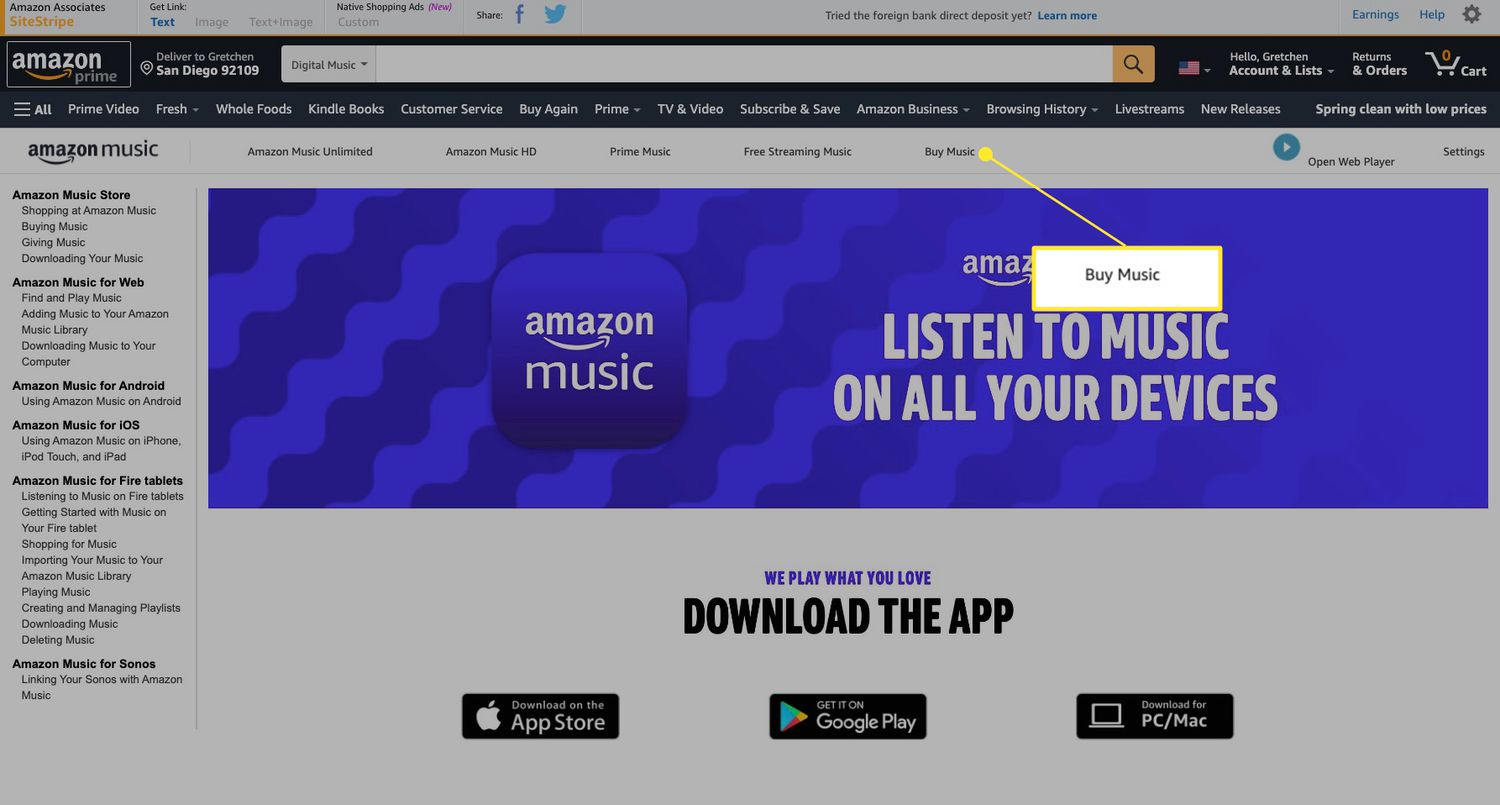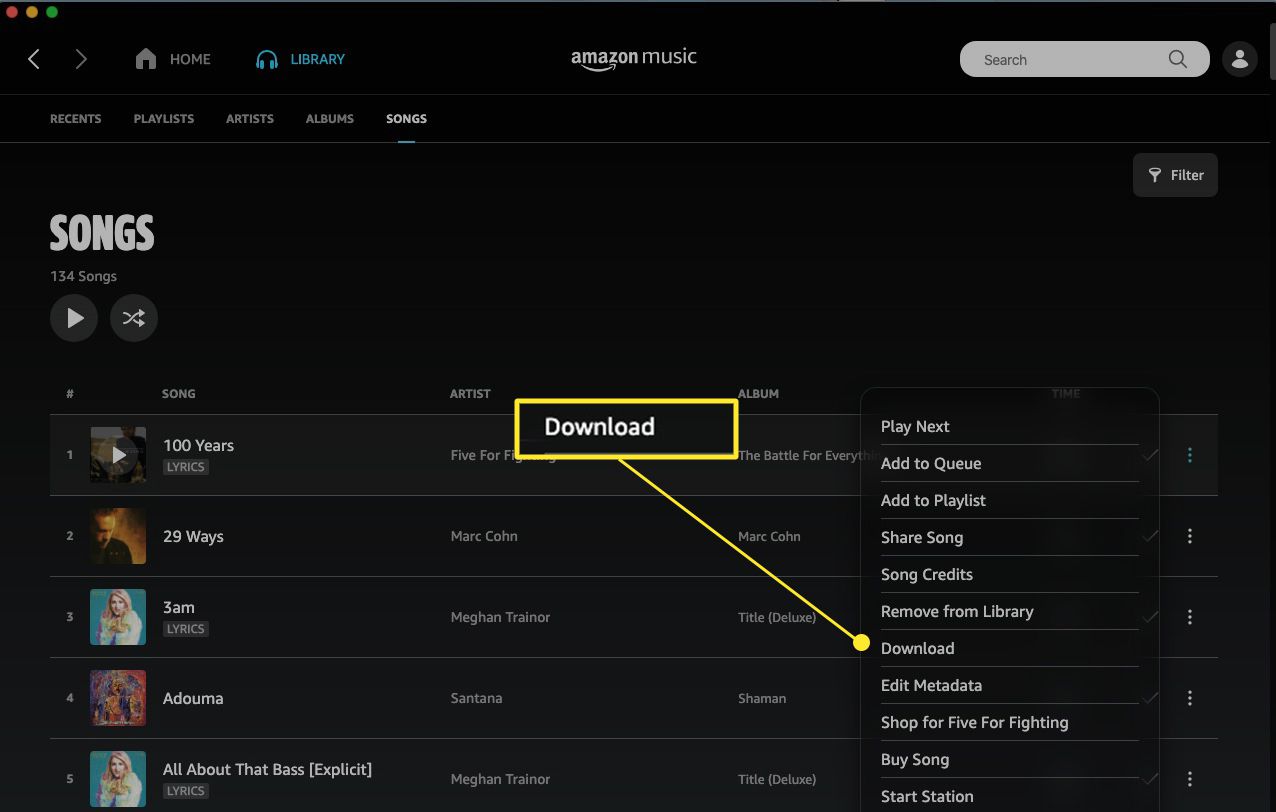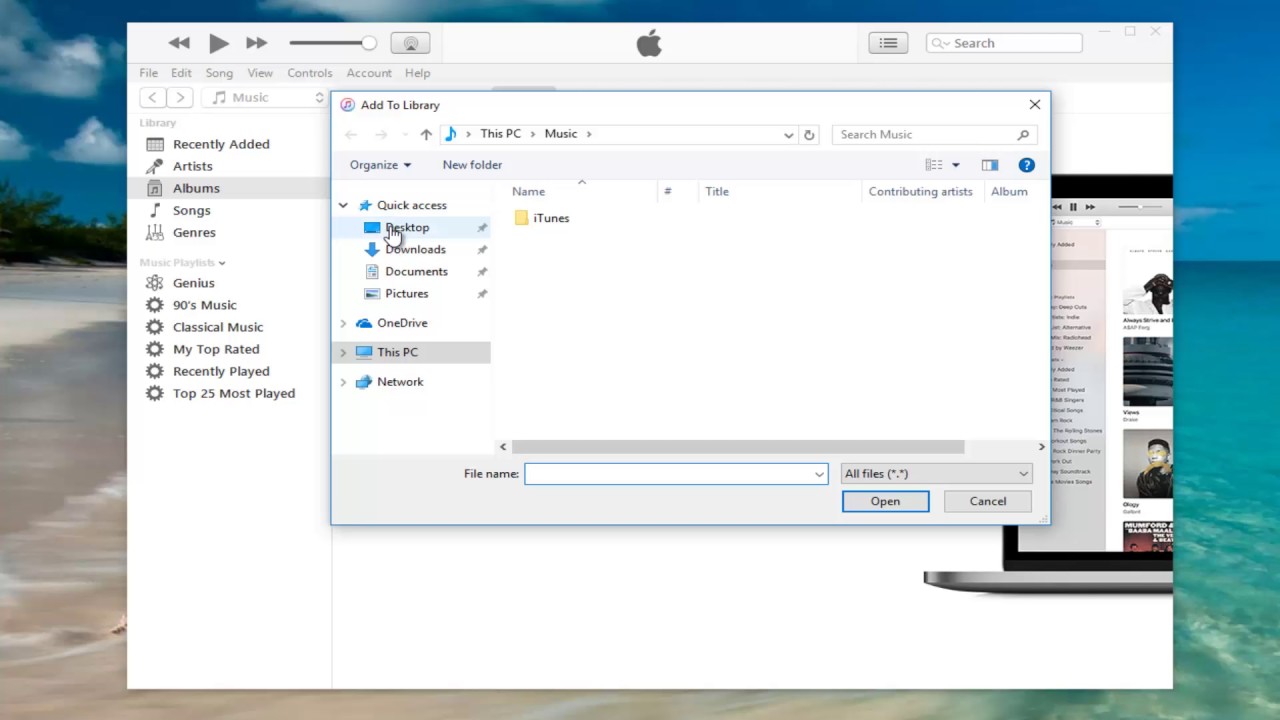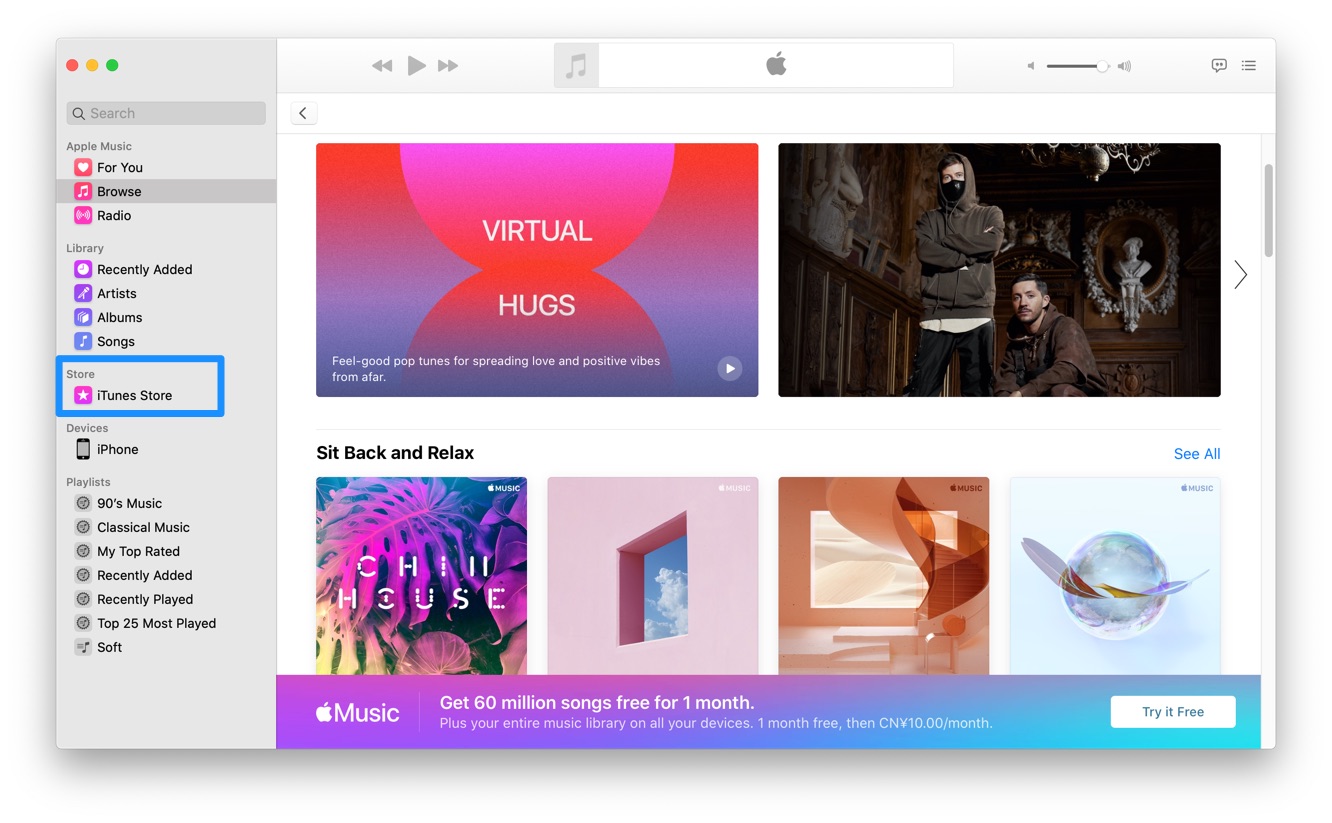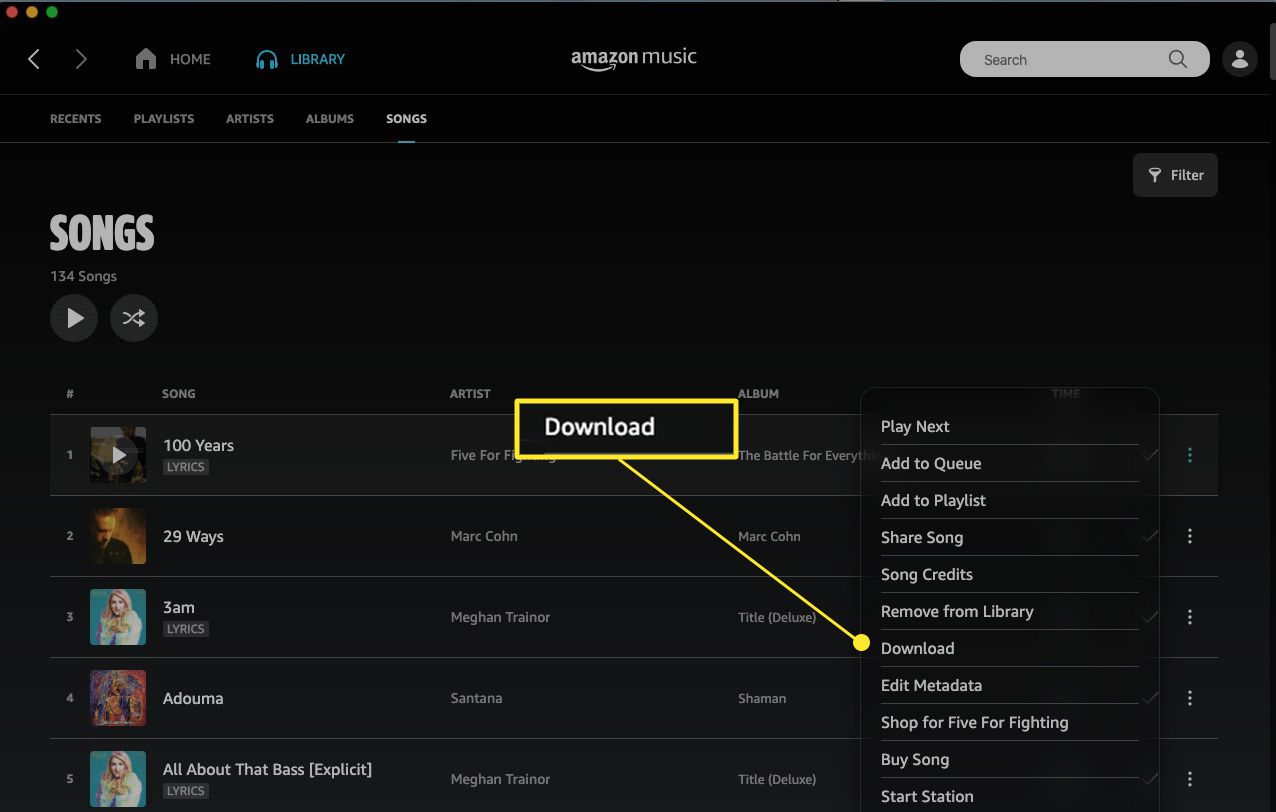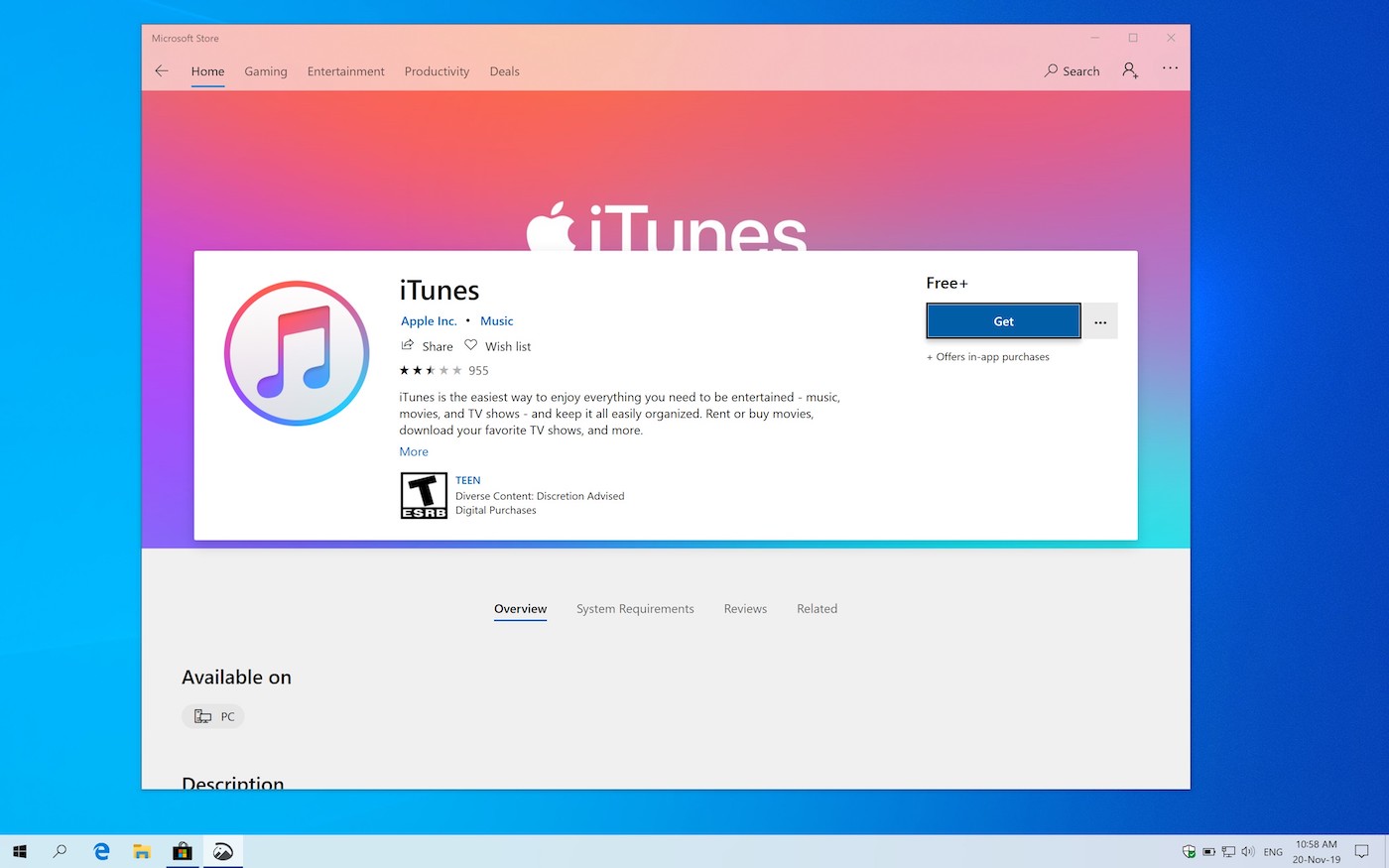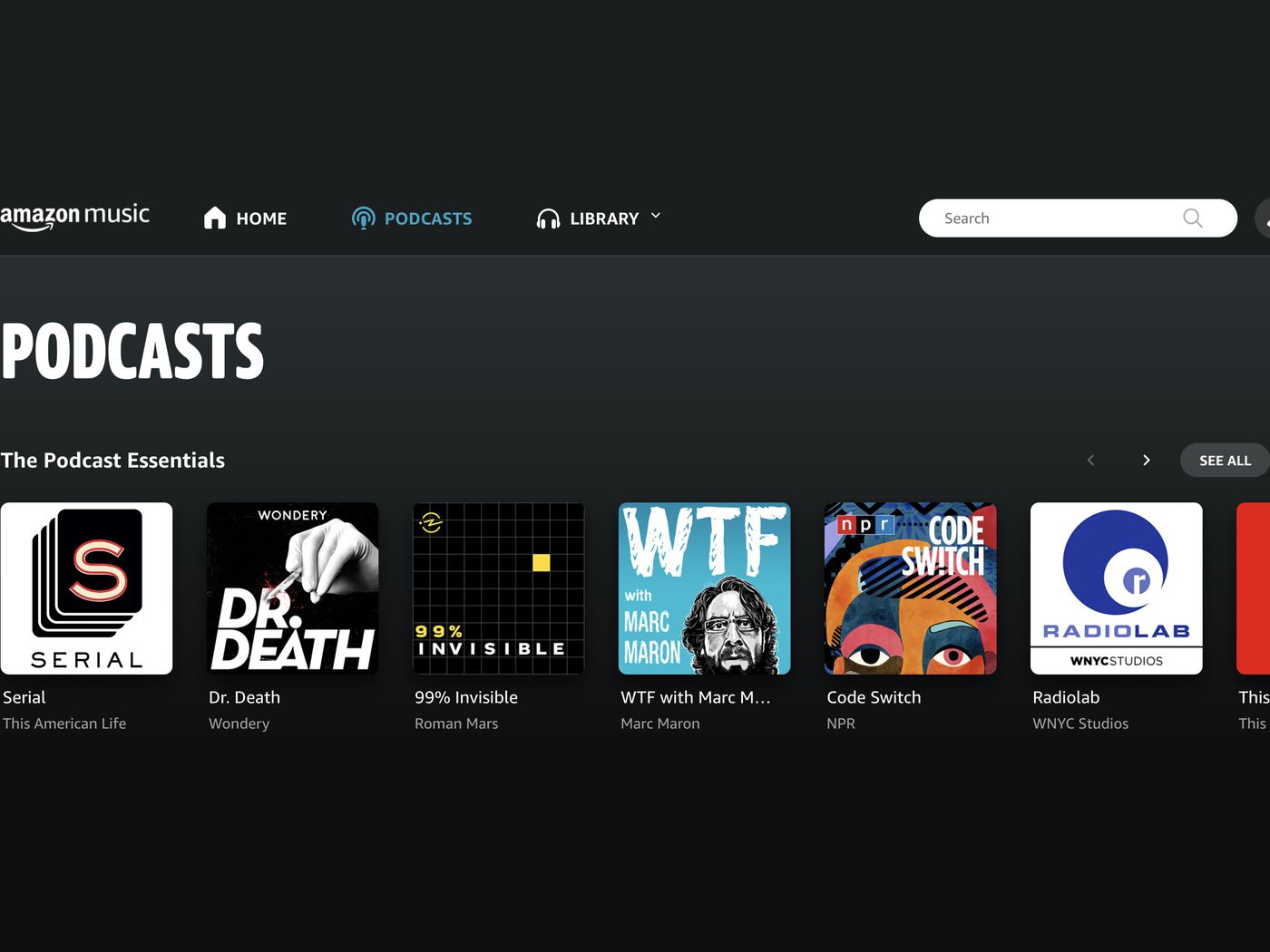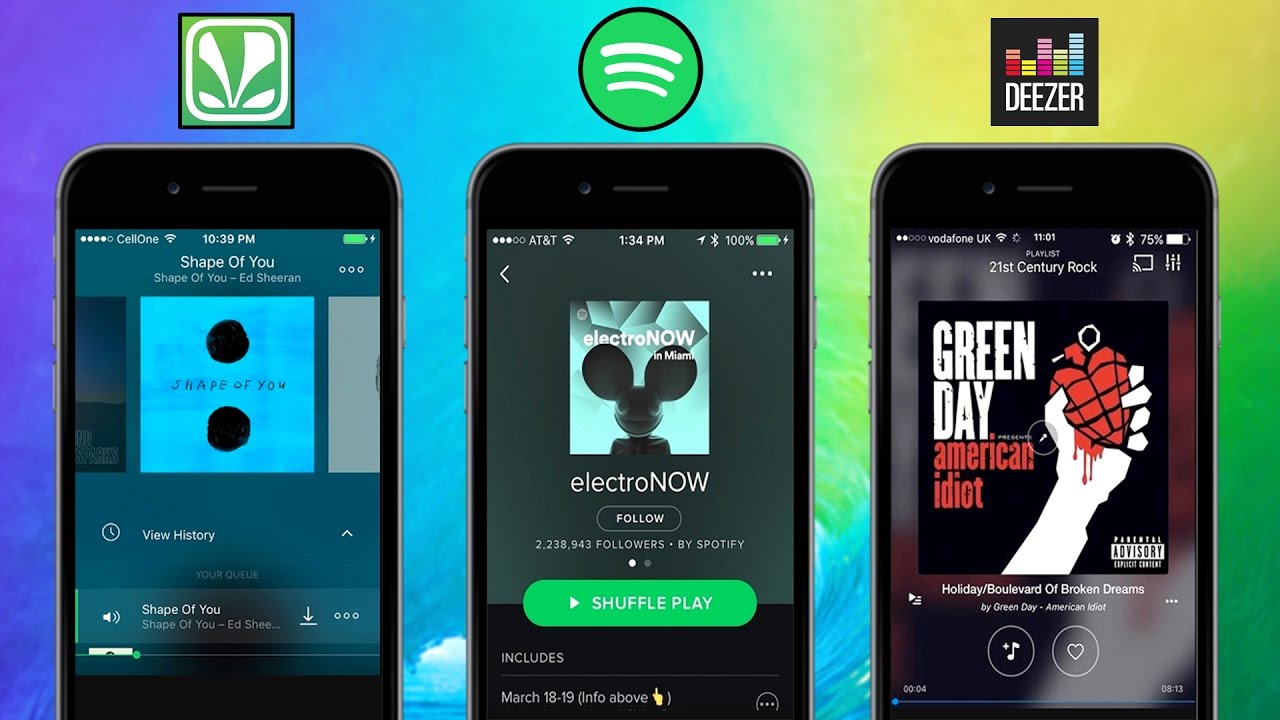Introduction
Welcome to the digital age, where music is just a click away! With the rise of the internet, purchasing and downloading music has become more accessible than ever before. Gone are the days of hunting for physical CDs or tapes; now, you can explore a vast library of music and download your favorite tracks to enjoy anytime, anywhere.
But with so many options available, how do you choose the right platform to purchase music? Whether you are a music enthusiast or someone discovering the joy of digital music for the first time, this guide will help you navigate the various options and make informed decisions when purchasing music online.
In this article, we will explore different avenues for purchasing music to download. From digital music stores to streaming services, pay-per-download websites to artist websites, we will discuss the pros and cons of each platform. We will also provide insights into the considerations you should keep in mind before making a purchase and highlight aspects like pricing, quality, DRM protection, payment options, and downloading and managing your music collection.
By the end of this article, you will have a clearer understanding of how to choose the right music platform that suits your preferences and meets your needs. Whether you are a fan of mainstream hits, indie music, or niche genres, purchasing music will be a delightful experience, enabling you to support your favorite artists and enjoy their work to the fullest.
So, let’s dive into the world of digital music and explore the different avenues for purchasing and downloading your favorite tunes!
Choosing a Music Platform
With the plethora of options available, choosing the right music platform can seem overwhelming. However, it all boils down to your personal preferences, budget, and the type of music experience you are looking for. Here are some popular choices to consider:
Digital Music Stores: Digital music stores like iTunes, Amazon Music, and Google Play offer a vast collection of songs for purchase. These platforms often provide high-quality audio files and allow you to download and store music on your devices. They also offer features like curated playlists and recommendations, allowing you to discover new music easily. However, keep in mind that purchasing individual songs or albums through digital stores can add up, especially if you have a large music library.
Streaming Services: Streaming services like Spotify, Apple Music, and Tidal have gained immense popularity in recent years. For a monthly subscription fee, you gain access to a massive library of songs that you can stream on-demand. This option is ideal if you enjoy exploring a wide range of music without the need for permanent downloads. However, it’s important to note that streaming services require a constant internet connection, and the songs are not actually owned by you.
Pay-Per-Download Websites: Pay-per-download websites such as Bandcamp and CD Baby offer a direct avenue to support independent artists. These platforms allow artists to sell their music directly to fans, often at a price set by the artist. When you purchase music through these websites, a significant portion of your payment goes directly to the artist, supporting their work. This option is perfect if you want to support emerging artists and discover unique and independent music.
Artist Websites: Many artists now sell their music directly through their own websites. This provides a unique opportunity to support your favorite artists while directly connecting with them. By purchasing music from artist websites, you can often unlock exclusive content, limited edition releases, and personalized messages from the artists themselves.
As you consider these options, think about your music consumption habits and your budget. Do you prefer owning your music or having access to a vast streaming library? Are you interested in supporting independent artists or exploring mainstream hits? Take your time to research and evaluate the different platforms before making a decision.
Next, we will delve deeper into the considerations you should keep in mind before purchasing music, including comparing prices and quality, DRM protection, payment options, and managing your downloaded music collection.
Digital Music Stores
Digital music stores have revolutionized the way we purchase and enjoy music. Platforms like iTunes, Amazon Music, and Google Play offer vast libraries of songs that can be easily purchased, downloaded, and added to your personal music collection. Let’s take a closer look at the advantages and considerations when using digital music stores:
Wide Selection: Digital music stores boast an extensive repertoire of songs spanning various genres, from mainstream hits to niche tracks. With millions of songs to choose from, you can easily find your favorite artists and discover new music.
High-Quality Audio: Most digital music stores offer high-quality audio files, allowing you to enjoy your music in rich and immersive sound. Formats such as MP3 or FLAC ensure that the music maintains its original quality when downloaded.
Curated Playlists and Recommendations: Digital music stores often provide curated playlists and personalized recommendations based on your listening habits. These features make it easier to explore new artists and genres, creating a tailor-made music experience.
Flexibility: Purchased songs can be downloaded and stored on multiple devices, allowing you to access your music offline. This flexibility is especially handy when traveling or in areas with limited internet connectivity.
Cost Considerations: Digital music stores typically operate on a per-song or per-album purchase model. While this allows you to own the music permanently, costs can add up, especially if you have an extensive music library. Consider your budget and music consumption habits before diving into purchasing individual songs.
Integration with Devices and Software: Digital music stores often integrate well with different devices and music software. They offer compatibility with various operating systems, music players, and audio file formats, ensuring a seamless experience across your devices.
Issues with DRM Protection: Digital Rights Management (DRM) protection can be a concern when purchasing music from digital stores. DRM imposes restrictions on how you can use the music, such as limiting the number of devices it can be played on or prohibiting copying or sharing. Be aware of the DRM policies of the platform you choose to ensure it aligns with your usage preferences.
Ultimately, digital music stores provide a convenient and accessible way to purchase and build your music collection. Their wide selection, high-quality audio, and additional features enhance the overall music listening experience. However, it’s essential to consider the costs and DRM policies before making a purchase.
Next, we will explore streaming services and how they differ from digital music stores in terms of access to music and their subscription-based models.
Streaming Services
Streaming services have transformed the way we consume music, offering instant access to a vast library of songs without the need for downloads or physical ownership. Platforms like Spotify, Apple Music, and Tidal have gained immense popularity, revolutionizing the way we enjoy music. Let’s take a closer look at the advantages and considerations when using streaming services:
Unlimited Music Library: Streaming services provide access to an extensive catalog of songs, giving you the freedom to explore various genres, artists, and albums. You can discover new music and listen to your favorite tracks all in one place.
Convenience and Accessibility: Streaming services enable you to listen to music on-demand, anytime and anywhere, as long as you have an internet connection. Whether you’re on your computer, mobile device, or even in the car, you can effortlessly access your favorite tunes.
Discoverability and Personalized Recommendations: Streaming platforms use algorithms to analyze your listening habits and provide personalized recommendations and curated playlists. These tailored suggestions help you discover new artists and genres that align with your preferences.
Cost-Effective: Compared to purchasing individual songs or albums, streaming services often offer monthly subscription plans that provide unlimited access to their entire music libraries. This model can be more cost-effective, especially for those who enjoy discovering and exploring a wide range of music.
Offline Listening: Many streaming services offer offline listening capabilities, allowing you to download songs and playlists for offline playback. This feature is handy when you’re in areas with limited internet connectivity or want to conserve your mobile data.
Artist Compensation: It’s important to note that streaming services compensate artists based on the number of streams their songs receive. While this model provides exposure for artists, some argue that it may not provide fair compensation for their work. Consider supporting your favorite artists directly through other means if supporting musicians financially is a priority for you.
Dependence on Internet Connection: Streaming services rely on a stable internet connection to access and stream music. Without a reliable internet connection, you won’t be able to enjoy your favorite tunes. Keep this in mind if you frequently find yourself in areas with poor connectivity.
Lack of Ownership: Unlike purchasing songs or albums, streaming services do not grant you ownership of the music. You are essentially “renting” access to the songs as long as you maintain your subscription. If owning music is important to you, streaming services might not be the ideal choice.
Streaming services have revolutionized the way we enjoy music, offering convenience, unlimited access, and personalized recommendations. However, consider the monthly subscription costs, reliance on internet connectivity, and the importance of music ownership when deciding whether streaming services align with your preferences and needs.
Next, we will explore pay-per-download websites and how they provide a direct avenue to support independent artists and discover unique music.
Pay-Per-Download Websites
Pay-per-download websites have emerged as a popular platform for music lovers to directly support independent artists and discover unique, lesser-known tracks. Websites like Bandcamp and CD Baby offer a wide range of music from various genres, providing a direct avenue for both artists and fans to connect. Let’s examine the advantages and considerations when using pay-per-download websites:
Supporting Independent Artists: Pay-per-download websites focus on empowering independent artists by allowing them to sell their music directly to fans. When you purchase music from these platforms, a significant portion of your payment goes directly to the artist, providing them with a fair compensation for their work.
Discovering Unique and Niche Music: Pay-per-download websites showcase a diverse array of music genres, often featuring artists who might not have mainstream recognition. If you enjoy exploring and discovering unique, underground music, these platforms are a treasure trove of hidden gems.
Direct Connection with Artists: Many pay-per-download websites offer features that allow artists to interact directly with their fans. You may have the opportunity to leave comments, receive personalized messages, and even purchase exclusive merchandise. This direct connection enhances the overall music experience and fosters a sense of community.
Flexible Pricing Models: Pay-per-download websites often allow artists to set their own pricing for their music. This flexibility benefits both artists and fans, as artists can determine the value of their work, while fans can choose the pricing option that aligns with their budget.
Quality Control: Pay-per-download websites typically prioritize high-quality digital music files, ensuring that you receive music in a format that maintains optimum audio fidelity. This attention to quality ensures an immersive and enjoyable listening experience.
Limitations in Music Selection: While pay-per-download websites offer a diverse collection of music, they may not have the same extensive library as major streaming services or digital music stores. If mainstream hits and popular artists are your primary interest, pay-per-download websites may not cater to your preferences.
Limited Streaming Options: Pay-per-download websites often prioritize downloading music rather than streaming it. While some platforms provide streaming capabilities, they may not offer the same convenience and accessibility as dedicated streaming services.
Less Discoverability: Discovering new music on pay-per-download websites can be more challenging compared to streaming platforms that provide personalized recommendations and curated playlists. You may need to actively search and explore different artists and genres to find music that resonates with you.
Pay-per-download websites offer a unique platform for artists to showcase their work and for fans to support independent music. If you enjoy discovering hidden musical gems and want to directly contribute to the success of emerging artists, pay-per-download websites are an excellent choice. However, keep in mind the potential limitations in music selection and streaming options.
Next, we will explore another avenue for purchasing music: artist websites, which provide a direct way to support your favorite musicians and access exclusive content.
Artist Websites
Artist websites have become increasingly popular as artists seek more direct ways to connect with their fans. These websites offer fans the opportunity to support their favorite musicians directly and often provide exclusive content, limited edition releases, and special experiences. Let’s explore the advantages and considerations when using artist websites to purchase music:
Direct Support for Artists: By purchasing music through an artist’s website, you can ensure that a significant portion of your payment goes directly to the artist. This direct support enables them to continue creating music and pursuing their artistic endeavors.
Access to Exclusive Content: Many artists offer exclusive content, such as bonus tracks, remixes, acoustic versions, or behind-the-scenes footage, to their fans through their websites. These exclusive offerings provide a deeper connection and a more personalized music experience.
Limited Edition Releases: Artists often release limited edition physical copies of their albums or singles through their websites. These special releases can include signed CDs, vinyl records, or merchandise bundles, making them highly coveted items for collectors and dedicated fans.
Personal Connection with Artists: Artist websites provide a space for artists to interact directly with their fans. Through features like comment sections, direct messages, or even live chats, artists can engage with their supporters on a more personal level, fostering a sense of community and appreciation.
Control over Pricing and Presentation: Artist websites give musicians more control over the pricing of their music and the presentation of their brand. They have the freedom to create unique packaging, offer discounted bundles, or provide special promotions that cater specifically to their fans.
Limited Music Library: While artist websites focus on the music of a specific artist, they may not have the extensive library that streaming services or digital music stores offer. If you prefer a wider selection of music across various genres and artists, artist websites may not meet your needs.
Potential Inconsistencies: Artist websites can vary in terms of functionality, design, and user experience. Some may have a streamlined purchasing process, while others may require more manual steps. It’s important to be patient and familiarize yourself with the website’s navigation to make your purchase smoothly.
Discoverability: Discovering new artists through their websites can be a more intentional process compared to platforms with algorithm-driven recommendations. You may need to actively seek out artists’ websites or rely on recommendations from friends, social media, or music forums.
Artist websites offer a unique and direct way to support your favorite musicians. If you value personal connections, exclusive content, and limited edition releases, artist websites are an excellent choice. However, keep in mind the potential limitations in music selection and the possibility of variations in website functionality.
Next, we will discuss important considerations to keep in mind before purchasing music, such as comparing prices and quality, DRM protection, payment options, and managing your downloaded music collection.
Considerations Before Purchasing
Before making any purchase, it’s important to consider a few key factors to ensure a satisfying music-buying experience. These considerations range from comparing prices and quality to understanding DRM protection and payment options. Let’s dive into the important factors you should keep in mind:
Comparing Prices and Quality: Different platforms may offer the same music at varying prices. Take some time to compare prices across different platforms to ensure you’re getting the best deal. Additionally, consider the quality of the audio files offered. Look for platforms that provide high-quality formats like MP3, FLAC, or WAV to ensure optimal sound reproduction.
DRM Protection: Digital Rights Management (DRM) protection refers to the use of technologies that limit the usage and sharing of downloaded music. Some platforms impose DRM restrictions on the music you purchase, such as limiting the number of devices you can play the music on or preventing you from making copies. Consider your preferences in terms of flexibility and ownership, and choose platforms that align with your usage needs.
Payment Options: Look for platforms that offer a variety of payment options to accommodate your preferences. Common payment methods include credit/debit cards, PayPal, and digital wallets. Ensure that the platform you choose provides a secure and reliable payment system to protect your personal and financial information.
Downloading and Managing your Music: Understand the process of downloading your purchased music and managing your music library. Check if the platform provides easy-to-use download options and offers organizational features to help you sort and categorize your music. Additionally, consider how you will back up your downloaded music to ensure you don’t lose your collection in case of device issues or data loss.
Storing and Backing Up your Music: Consider the storage capacity of your devices and make sure you have enough space to store your downloaded music. Additionally, it’s crucial to establish a backup system for your music to prevent any loss in the event of device failure. Cloud storage or external hard drives are useful options to ensure the safety and accessibility of your music library.
Supporting Artists: If supporting artists directly is important to you, consider purchasing music from platforms that provide higher revenue shares to artists. Platforms like pay-per-download websites or artist websites often have models that prioritize artist compensation, ensuring that your money goes directly to the creators.
Exploring Genres and Artists: Consider the type of music you enjoy and explore different platforms to find the most extensive collections within those genres. If you have specific niche interests or prefer independent artists, platforms like pay-per-download websites or artist websites may offer a more tailored selection to suit your preferences.
By considering these factors, you can make informed decisions when purchasing music online. Comparing prices and quality, understanding DRM protection, exploring payment options, and managing your downloaded music are essential aspects of creating a satisfying music collection.
In the next section, we will explore the significance of comparing prices and quality before purchasing music, and how it directly impacts your overall music-buying experience.
Comparing Prices and Quality
When it comes to purchasing music, comparing prices and quality is an essential step to ensure that you’re making the most out of your investment. By taking the time to evaluate these factors, you can make informed decisions and enhance your overall music-buying experience. Let’s explore why comparing prices and quality is crucial:
Cost-Efficiency: Different platforms may offer the same music at varying prices. By comparing prices across various platforms, you can ensure that you’re getting the best deal. Consider factors such as individual song prices, album prices, or subscription costs if applicable. It’s important to strike a balance between price and the value you place on the music you’re purchasing, taking into account your budget and the importance of supporting artists.
Quality of Audio: The quality of the music you purchase is another vital factor to consider. Look for platforms that offer high-quality audio files, such as formats like MP3, FLAC, or WAV. These formats provide superior sound reproduction and a more immersive listening experience. Higher-quality files tend to capture the nuances and details of the music better, ensuring that you enjoy the music as the artists intended.
Understanding File Formats: Familiarize yourself with various audio file formats and their compatibility with your devices and preferred music players. Certain platforms may offer a limited range of file formats, while others provide more flexibility. Choosing a platform that offers a wide selection of file formats ensures that you can enjoy your music on different devices and software without any compatibility issues.
Sampling Music: Some platforms allow you to listen to snippets or short previews of songs before making a purchase. Take advantage of these features to get a sense of the music’s quality, production, and overall appeal. Sampling music can help you make informed decisions and avoid any potential disappointments after purchasing.
User Reviews and Ratings: Consider reading user reviews and ratings of platforms or specific albums/artists before making a purchase. User reviews can provide insights into the quality of the music, the platform’s reliability, and the overall user experience. However, keep in mind that reviews can be subjective, so it’s helpful to read multiple reviews to form a balanced opinion.
Balance Between Price and Quality: It’s important to strike a balance between price and quality when comparing different platforms. A higher price doesn’t always guarantee better quality, and a lower price doesn’t necessarily indicate compromised audio fidelity. Consider your budget and the value you place on the music, and choose a platform that offers a fair balance between cost and quality.
By comparing prices and quality, you can make informed decisions when purchasing music and optimize your overall music-buying experience. Evaluating the cost-efficiency, audio quality, understanding file formats, sampling music, and considering user reviews are key steps in ensuring that you’re getting the best value for your money.
In the next section, we will delve into the significance of understanding DRM protection and its implications when purchasing music online.
DRM Protection
When purchasing music online, it’s important to understand the concept of Digital Rights Management (DRM) protection and its implications. DRM refers to the use of technologies that control and restrict the usage and sharing of digital content, including music. It can impact your ability to freely access and enjoy the music you purchase. Let’s explore why understanding DRM protection is significant:
Copy and Sharing Restrictions: DRM protection can limit your ability to make copies of the music you purchase or share it with others. Some platforms impose restrictions on the number of devices you can play the music on, the number of copies you can make, or even prohibit sharing the music altogether. It’s essential to consider your preferences in terms of music usage and sharing, and choose platforms that align with your desired level of flexibility.
Ownership and Portability: DRM protection can impact the ownership and portability of the music you purchase. If you value owning the music you buy and having control over its usage and distribution, platforms with less stringent DRM policies or those that offer DRM-free music may be more suitable. DRM-free music allows you to freely transfer and play the music on any device without restrictions.
Compatibility with Devices and Software: DRM-protected files may have limitations when it comes to compatibility with different devices and music players. Some platforms use proprietary DRM technologies that require specific software or devices to access the music. Ensure that the music you purchase is compatible with the devices and software you plan to use to enjoy your music collection.
DRM and Streaming Services: It’s important to note that most streaming services utilize DRM protection to prevent unauthorized downloading and sharing of music. While the use of DRM in streaming services may restrict certain aspects of music usage, it helps prevent piracy and supports artists by ensuring they receive compensation for their work. If you prefer exploring a wide range of music and access to a vast library, streaming services may still be a suitable choice despite DRM limitations.
Protecting Intellectual Property Rights: DRM protection plays a crucial role in protecting the intellectual property rights of artists and content creators. It prevents unauthorized distribution and unauthorized use of copyrighted material. By purchasing music from platforms that utilize DRM, you support artists and contribute to the sustainability and growth of the music industry.
Considerations for Audiophiles: Audiophiles, who place a premium on audio quality, may prefer DRM-free music or platforms that offer high-quality, lossless audio formats. DRM can potentially impact the audio quality, especially if it involves compression or other measures to protect the music files. Therefore, understanding the DRM policies and their implications on audio fidelity is crucial for those seeking the best possible listening experience.
Each platform has its own approach to DRM protection, so it’s essential to understand the policies and restrictions of the platforms you choose. By considering your preferences regarding ownership, sharing, compatibility, and audio quality, you can select platforms that align with your needs while also respecting the intellectual property rights of artists.
In the next section, we will explore different payment options available when purchasing music online and how they can contribute to your convenience and security.
Payment Options
When purchasing music online, having a variety of payment options ensures convenience, flexibility, and security. Different platforms offer different payment methods to accommodate the preferences and needs of their users. Understanding the available payment options can contribute to a seamless and satisfactory music-buying experience. Let’s explore the significance of payment options:
Credit/Debit Cards: Credit and debit cards are the most widely accepted payment method for purchasing music online. They provide convenience and ease of use, allowing you to make purchases with just a few clicks. It’s important to ensure that the platform you’re using has a secure and reliable payment gateway to protect your sensitive financial information.
PayPal: PayPal is a popular online payment platform that allows you to link your bank account or credit card to make purchases. It offers an additional layer of security as you don’t have to provide your payment details directly to the music platform. PayPal also provides buyer protection, which adds an extra level of peace of mind when making online transactions.
Mobile Payment Platforms: Many online music platforms now accept mobile payment platforms such as Apple Pay or Google Pay. These platforms offer a secure and convenient way to make purchases using your mobile device. Mobile payments provide an extra layer of security through technologies like biometric authentication or tokenization.
Digital Wallets: Digital wallets like Amazon Pay or Samsung Pay allow you to securely store your payment information and make purchases with just a few taps on your device. These wallets often offer additional features such as loyalty program integration and enhanced payment security.
Gift Cards or Prepaid Cards: Some platforms accept gift cards or prepaid cards as a form of payment. These cards allow you to add credits to your account, which you can then use to make purchases. Gift cards are often a popular option for gifting music to others or controlling your spending on platforms that offer this payment method.
Cryptocurrencies: In recent years, some music platforms have started accepting cryptocurrencies like Bitcoin or Ethereum as a form of payment. Cryptocurrencies offer decentralization, security, and anonymity in transactions. However, it’s important to ensure that the music platform you’re using supports the specific cryptocurrency you wish to use.
Subscription Services: Subscription-based platforms often offer recurring billing options, where you authorize the platform to charge your payment method automatically at regular intervals. This model provides convenience as you don’t have to manually make payments each time. However, make sure to keep track of your subscriptions and regularly review them to ensure they align with your needs.
Considering the available payment options and choosing the one that best suits your preferences and provides a secure and seamless experience is essential. Ensure that your chosen platform has a reliable payment gateway, protects your sensitive information, and offers flexibility in terms of payment methods.
Next, we will explore the process of downloading and managing your purchased music, including considerations for storage, organization, and backup.
Downloading and Managing your Music
Once you’ve purchased music online, the next step is to download and manage your collection. Understanding the process of downloading and organizing your music ensures that you can access and enjoy your favorite songs easily. Let’s explore the importance of downloading and managing your music:
Downloading Music: Most platforms provide a straightforward process for downloading your purchased music. Look for options to download individual songs, albums, or playlists, depending on your preferences. Ensure that you understand the download options available, including the file format and audio quality. Downloading your music allows you to enjoy it offline, even in areas with limited internet connectivity.
Storage Considerations: Before downloading music, consider the available storage capacity on your devices. Ensure that you have enough space to accommodate your music library without compromising the performance of your device. If you have a large collection, consider using external storage devices or cloud storage solutions to free up space on your device.
Organizing your Music: Organizing your music collection helps you find and access your favorite songs easily. Consider creating folders or playlists based on genres, artists, or moods to keep your collection organized. Many music players and media management software offer features for automatically organizing your music, saving you time and effort.
Metadata Management: Metadata refers to the information embedded in your music files, such as artist name, album title, and track number. Ensuring accurate and consistent metadata is crucial for effective music management. If your music files have incomplete or incorrect metadata, you can use metadata editing software or music management applications to update and standardize the information.
Backups and Data Loss Prevention: It’s essential to establish a backup system for your downloaded music to safeguard against data loss. Consider regularly backing up your music files to external hard drives, cloud storage, or other backup solutions. This precaution ensures that you don’t lose your music collection in the event of device failure, accidental deletion, or other unforeseen circumstances.
Syncing Across Devices: If you have multiple devices, syncing your music library across them allows you to enjoy your music wherever you go. Look for music players or software that offer synchronization features, enabling you to access your music seamlessly on all your devices. This synchronization ensures that your music collection is consistent and up to date across different platforms.
Consideration for Streaming Music: If you subscribe to streaming services, managing your music may involve creating playlists, following artists, and saving albums or songs for offline listening. Familiarize yourself with the features and options provided by the streaming platform you use to make the most of your streaming music collection.
By understanding the process of downloading and managing your music, you can ensure easy access to your collection and enhance your overall music listening experience. Take the time to organize your music, backup your files, and sync your library across devices. This way, you can enjoy your favorite tunes anytime, anywhere.
Next, we will conclude the guide and summarize the key points discussed throughout the article.
Storing and Backing Up your Music
Storing and backing up your music is essential to ensure the safety and accessibility of your music collection. By implementing effective storage and backup strategies, you can protect your music from loss, device failure, or accidental deletion. Let’s explore the significance of storing and backing up your music:
Storage Options: Consider the available storage options for your music collection. Internal storage on your devices, such as laptops, computers, or mobile phones, is suitable for immediate access. However, keep in mind the limited storage capacity and the potential impact on the performance of your device. Utilizing external storage devices, such as external hard drives or portable USB drives, allows you to expand your storage capacity and keep your collection separate from your primary device.
Cloud Storage: Cloud storage services offer a convenient and secure option for storing your music. Platforms like Google Drive, Dropbox, or OneDrive allow you to upload your music files to remote servers, providing easy access from multiple devices. Cloud storage also acts as a backup solution, protecting your music collection against hardware failures, crashes, or other unforeseen events.
Organizing: When storing your music, consider implementing a consistent organizational structure. Create folders based on genres, artists, or albums, ensuring that your collection is neatly arranged and easy to navigate. This organization not only enhances your music management experience but also makes it simpler to locate and enjoy specific tracks or albums.
Backing Up: Implementing a backup strategy is crucial for protecting your music collection. Backing up your music involves creating duplicate copies of your files and storing them in separate locations or on different devices. This protects your music from data loss due to device theft, hardware failure, or accidental deletion. Regularly schedule backups to ensure that your collection remains safe and up to date.
Automated Backup Solutions: Consider using automated backup solutions to streamline the backup process. These solutions automatically back up your music files at scheduled intervals or in real-time as changes occur. They can be set up to update your backups whenever new music is added to your collection, ensuring that you never lose any recently acquired tracks.
Redundancy: Redundancy is a crucial aspect of data protection. Create multiple copies of your music backups and store them in separate locations. This ensures that even if one backup gets corrupted or becomes inaccessible, you have another copy to rely on. Distributing your backups across different storage media and locations adds an extra layer of security.
Verifying Backups: Periodically verify the integrity of your backups to ensure that your music files are intact and accessible. This involves checking that the backup copies can be successfully restored and that the files remain uncorrupted. Verification prevents unpleasant surprises when you need to rely on your backups in the event of data loss.
Testing Restoration: Alongside verifying backups, testing restoration is equally important. Occasionally restore your music files from backups to ensure the restoration process works as intended. This helps ensure that you can successfully recover your music collection when necessary.
By storing and backing up your music collection, you can protect your investment and ensure that your favorite tracks are safe from loss or damage. Whether utilizing local storage, cloud storage, or a combination of both, implementing a comprehensive backup strategy ensures that you can enjoy your music without worrying about potential data loss.
In the final section, we will provide a concise summary of the key points discussed throughout this guide.
Conclusion
Purchasing and downloading music has become more accessible than ever before, thanks to various online platforms. Throughout this guide, we have explored different avenues for purchasing music, including digital music stores, streaming services, pay-per-download websites, and artist websites. Each platform offers unique advantages and considerations, allowing you to tailor your music-buying experience to your preferences and support your favorite artists.
Before making a purchase, it’s important to consider various factors, such as comparing prices and quality, understanding DRM protection, exploring payment options, and managing your downloaded music. These considerations ensure that you make informed decisions and optimize your music buying experience.
Comparing prices and quality allows you to find the best value for your money while ensuring an enjoyable listening experience. Understanding DRM protection helps you make choices that align with your preferences regarding usage, sharing, and ownership of your music. Exploring different payment options provides convenience, flexibility, and security when making online purchases. Managing your downloaded music, including organizing your collection and implementing backup strategies, ensures its accessibility and protection from data loss.
Whether you choose to build a diverse music library through digital music stores, enjoy the vast selection offered by streaming services, support independent artists through pay-per-download websites, or connect with your favorite musicians on their artist websites, the world of online music purchasing is at your fingertips.
So, explore the various platforms, discover new music, and embark on a journey filled with melodies and rhythms that accompany you through every moment. By purchasing music online, you not only gain access to an incredible array of songs, but also support the talented artists who bring them to life.







